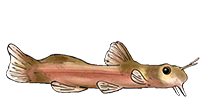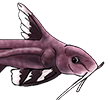Better than Blood worms for Cent. perugiae?
- nvcichlids
- Posts: 1855
- Joined: 22 Jul 2008, 20:48
- My images: 6
- My cats species list: 44 (i:3, k:0)
- My aquaria list: 1 (i:1)
- My BLogs: 6 (i:4, p:224)
- Spotted: 2
- Location 1: Milwaukee, WI
- Location 2: Waimate, New Zealand
Better than Blood worms for Cent. perugiae?
I know everyone says the fish go crazy for blood worms, but mine would not feed during the day even with blood worms in there. I decided to try something I have had for a while that nothing was eating (freeze dried plankton) and out of no where, out come the two cent. perugiae. They are now extremely active during the day and not so much at night because I will only feed the plankton in the morning. They come out and sit with my cories, or just lounge on the pleco's turf and not mind being out. I was just wondering if anyone else has tried freeze dried plankton and had the same results?
What's your favorite Dressing~~
- apistomaster
- Posts: 4735
- Joined: 10 Jun 2006, 14:26
- I've donated: $90.00!
- My articles: 1
- My cats species list: 12 (i:0, k:0)
- My Wishlist: 1
- Location 1: Clarkston, WA, USA
- Location 2: Clarkston, WA, USA
- Interests: Aquaculture and flyfishing
Re: Better than Blood worms for Cent. perugiae?
It is odd that your fish aren't eating frozen blood worms. I would suspect you have a bad batch. C. perugiae eat mostly Chironomids in nature. Fish keepers call Chironomid larvae "Blood Worms". Chironomids are the non-biting mosquito-like Gnats which have aquatic larval stages. When they are ready to hatch, the Chironomid larvae pupate. A layer of bouyant gas forms between the pupae and the exoskeleton which causes them to rise slowly to the surface in incredible numbers. When the exoskeleton breaks the water surface it splits and the fully formed flying Gnat remains at rest on it's old shell until it can fly away. How long this takes is a function of temperature and relative humidity. It is an extremely vulnerable stage in the Chironomid life cycle and many fish either focus on their abundance on an ad hoc basis or become fairly specialized feeders like C. perugiae.
Try a different source or brand of fresh frozen blood worms and also try freeze dried blood worms. Bad batches of frozen blood worms are frequently sold. That your C. perugiae are avidly taking plankton is also good. It is good if they are fed a variety of foods. If you have access to any live foods your catfish will appreciate receiving them, too.
Try a different source or brand of fresh frozen blood worms and also try freeze dried blood worms. Bad batches of frozen blood worms are frequently sold. That your C. perugiae are avidly taking plankton is also good. It is good if they are fed a variety of foods. If you have access to any live foods your catfish will appreciate receiving them, too.
Avid Trout fly fisherman. ·´¯`·...¸><)))º>
- nvcichlids
- Posts: 1855
- Joined: 22 Jul 2008, 20:48
- My images: 6
- My cats species list: 44 (i:3, k:0)
- My aquaria list: 1 (i:1)
- My BLogs: 6 (i:4, p:224)
- Spotted: 2
- Location 1: Milwaukee, WI
- Location 2: Waimate, New Zealand
Re: Better than Blood worms for Cent. perugiae?
Thanks for the info Larry, i didn't say they won't eat, they just won't eat them with lights on. They will eat them once the lights are off. THe love freezedried over frozen for some reason no matter what type of food it is. They get the following foods weekly: frozen bloodworms, frozen brine shrimp, live blood worms, live brine, freeze dried blood worms, freeze dried plankton, super brine shrimp flake, super bloodworm flake, super earthworm flake. I think it is varied enough, just seems like the plankton is by far the best thing to get them to come out and stay out when the lights are on.
What's your favorite Dressing~~




